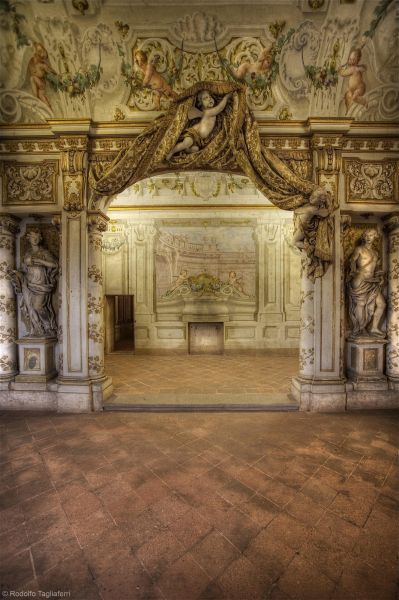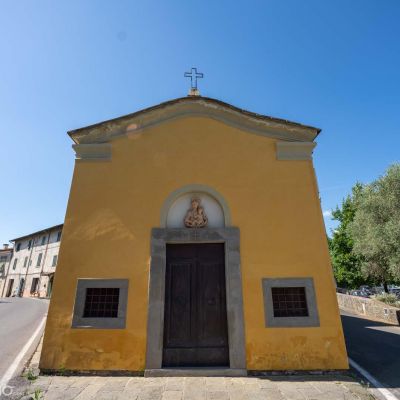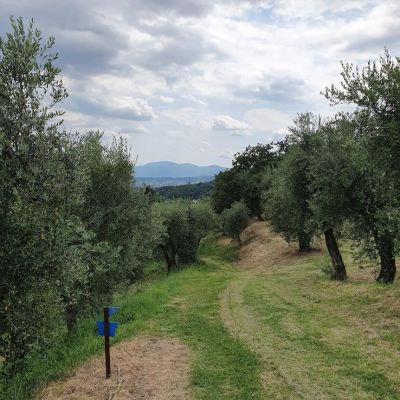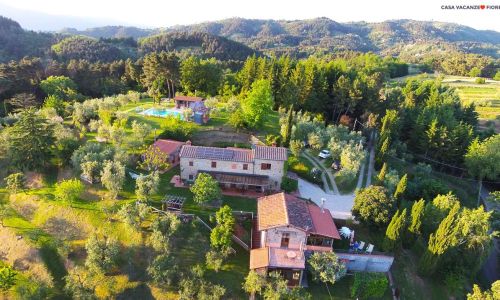If you are on holiday in Buggiano or in Valdinievole Villa Bellavista is a really unmissable stop!
Even only outside is worth a short visit (currently the Villa is being restored and closed to the public).
It is a beautiful example of architecture of the late seventeenth century, born on the hill where there was already a Medici villa (on the right where today there is a building restructured to become a place of hospitality).
The name, villa or castle of Bellavista, was given in relation to the beauty of the building surrounded by a wonderful garden, and the view you can enjoy from here.
It was Fabio Feroni a who wanted the creation of this sumptuous building even if the fortune of the family was due to his father Francesco.
He created a fleet for the slave trade, which earned him so much money that he became friends with Grand Duke Cosimo III himself.
This privileged relationship allowed him to buy the villa directly from the Medici family.
The project of the villa, the chapel, the garden and all the green areas was entrusted to the architect Antonio Maria Ferri, very fashionable in Tuscany at that time.
It is also the project of the aqueduct that brings water from the Source of Capofio here and that you can meet during the walks along the River Cessana.
The exterior of Villa Bellavista
The rectangular-plan villa is characterized by 4 protruding towers with ashlar work on the corners and enriched by a central portico.
On the right of the villa is the Chapel of Bellavista with its suggestive dome with lantern and the entrance with arches and columns.
The access to the villa is through two avenues of access: the main one that leads to the villa alternates statues and cypresses and culminates in the beautiful fountain with bathtub in front of the entrance, and the rear one. Both are perpendicular to the villa and connect it to the surrounding countryside where once stretched the farms and cultivated fields
Interiors
The interior decoration is very rich: frescoed ceilings, the large central vault, the pictorial decorations above the doors and above all the fixtures.
The most important cycle is that carried out by Pier Dandini, very active among the noble families around the doctors. In perfect rococo style, light and graceful, most of the frescoes depict the same theme: the defense of the Christian faith in which participated Fabio Feroni during the attack of Vienna in 1683 by the Turks.
Here among the decorations stand out “The triumph of faith” where you see the Feroni represented as a young warrior who wears as a trophy Turkey chained to the Catholic Church and to the Faith; “The Fall of the Giants“, where the Virtues defeat the Vices.
Other artists worked here. Niccolò Nannetti, author of the apotheosis of the Madonna in the Church of Santa Maria in Selva, painted the frescoes in the last two rooms on the ground floor. Giovan Battista Ciceri made the stucco in the chapel and the panels in the central hall.
Inside the real jewel is the first alcove decorated on one side with two high reliefs with “Venus and Adonis” on the other with “Selene and Endymion”.
In the eighteenth century, finished the work, the villa was at its peak. The court life here was very lively but already around the 1920s the properties and farms around the building decreased a lot, and the Feroni family in order to reclaim the Padule dried up their assets.
On July 26th until the 19th century, the traditional St. Anna Farm dedicated to cattle and horses was held in the meadows, then moved to the one that took the name of Piazza del Bestiame, in Borgo a Buggiano.
The villa passed under the ownership of many families and it was the Kanzlers, in the nineteenth century, to bring it back to its ancient splendour. They loved to organize parties to which they invited the most prominent families of the place but also actors and musicians of international fame.
Not long after, however, in 1926, it was stripped of all the furnishings and in 1938 became the property of the Ministry of Interior as the headquarters of the National Fire Department.
During the Second World War it was also a military hospital, from the ’50s it hosted the National Orphan Institute of Fire Brigades, finally it hosted since the ’90s the historical museum of the National Fire Brigade.
Today it is being restored to return to its former splendour and be reopened to the public.
(photo credits ®Rodolfo Tagliaferri)
It is said that once two underground passages connected the villa with the pre-existing Medici palace and the chapel.








































































